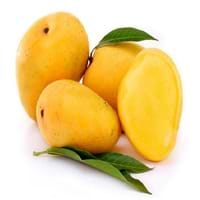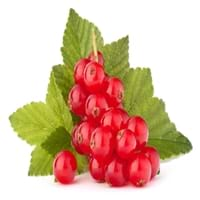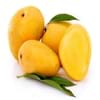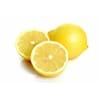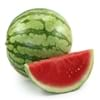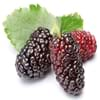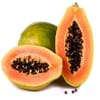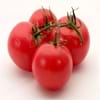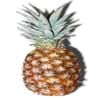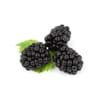Health Benefits
Cancer prevention, Cures fatigue, Heart care, Prevents strokes
Cancer prevention, Gout treatment, Heart care, Regulation of heart rate, Treatment of rheumatism
General Benefits
Anti oxidant properties, Boosts immune system, Controls blood pressure, Digestive aid, Improves eye vision, Maintains healthy cholesterol level
Anti oxidant properties, Controls blood pressure, Cures fever, Digestive aid, Healing of wounds, Helps in weight loss, Strengthens bones
Skin Benefits
Anti-aging benefits, Brightens and lightens complexion, Skin cleansing, Skin rejuvenation, Treatment of acne, Treatment of blackheads, Treatment of dark spots
Brightens and lightens complexion, Reduces wrinkles, Treatment of acne
Hair Benefits
Good conditioner, Prevents hair loss, Treatment of dandruff
Protects hair
Allergy Symptoms
Abdominal pains, Breathing difficulty, Diarrhea, Runny nose, Sneezing, Swelling of mouth, tongue or lips, Watery eyes
Abnormally rapid heart rate, Anaphylaxis, Breathing difficulty, Hives, Itching, Swallowing difficulties
Side Effects
Increase in blood sugar level, Diarrhoea, Weight gain
Possibly unsafe during pregnancy
Best Time to Eat
Don't consume at night and before bed, Eat the fresh ones, avoid mixing with any other foods, don't eat after meal., Morning time (before lunch)
Best if taken as a breakfast (or empty stomach), As a snack in the late afternoon, Don't eat after meal, Morning time (before lunch)
Vitamin B5 (Pantothenic Acid)
Vitamin C (Ascorbic Acid)
Vitamin K (Phyllochinone)
Calories in Fresh Fruit with Peel
Not Available
Calories in Fresh Fruit without Peel
Not Available
Calories in Frozen Form
Not Available
Calories in Canned Form
Not Available
Season
Spring, Summer
Summer
Varieties
Alphonso, Valencia Pride, Badami, Chaunsa, Nam Dok Mai, Glenn, Sindhri, Madame Francique, Kesar and Keitt
Rovada, Stanza, Red Lake, Junifer and Jonkheer van Tets
Color
Orange, Red, Yellow
Red
Origin
Southern Asia
Europe
Soil Type
Clay, Loam, Sand
Moist, Well-drained
Climatic Conditions
Humid, Warm to hot climate
Cold
Facts about
- A mango tree can bear fruits even after the age of 300 years.
- Height of a mango tree can be as high as 100 feet.
- In India, mango is known as a symbol of love. Also, a mango basket is considered as the sign of friendship.
- The albino version of red currants known as white currants, are often sold as different fruit.
- Red currant tea is healthy substitute for coffee.
- There are more than 150 varieties of red currants.
Top Producer
India
Russia
Other Countries
Bangladesh, Brazil, China, Indonesia, Mexico, Nigeria, Pakistan, Philippines, Thailand
Belgium, France, Germany, Ireland, Italy, Netherlands, Poland, Portugal, Scotland, Spain, Sweden, United Kingdom
Top Importer
United States of America
Germany
Top Exporter
Mexico
Russia
Botanical Name
Mangifera Indica
Ribes rubrum
Synonym
Not Available
Not Available
Subkingdom
Tracheobionta
Tracheobionta
Division
Magnoliophyta
Magnoliophyta
Class
Magnoliopsida
Magnoliopsida
Order
Sapindales
Saxifragales
Family
Anacardiaceae
Grossulariaceae
Species
M. indica
R. rubrum
Generic Group
Cashew
Saxifrage
Difference Between Mango and Red Currant
We might think that Mango and Red Currant are similar with respect to nutritional value and health benefits. But the nutrient content of both fruits is different. Mango and Red Currant Facts such as their taste, shape, color, and size are also distinct. The difference between Mango and Red Currant is explained here.
The amount of calories in 100 gm of fresh Mango and Red Currant with peel is Not Available and 56.00 kcal and the amount of calories without peel is 60.00 kcal and Not Available respectively. Thus, Mango and Red Currant belong to Low Calorie Fruits and Low Calorie Fruits category.These fruits might or might not differ with respect to their scientific classification. The order of Mango and Red Currant is Sapindales and Saxifragales respectively. Mango belongs to Anacardiaceae family and Red Currant belongs to Grossulariaceae family. Mango belongs to Mangifera genus of M. indica species and Red Currant belongs to Ribes genus of R. rubrum species. Beings plants, both fruits belong to Plantae Kingdom.
